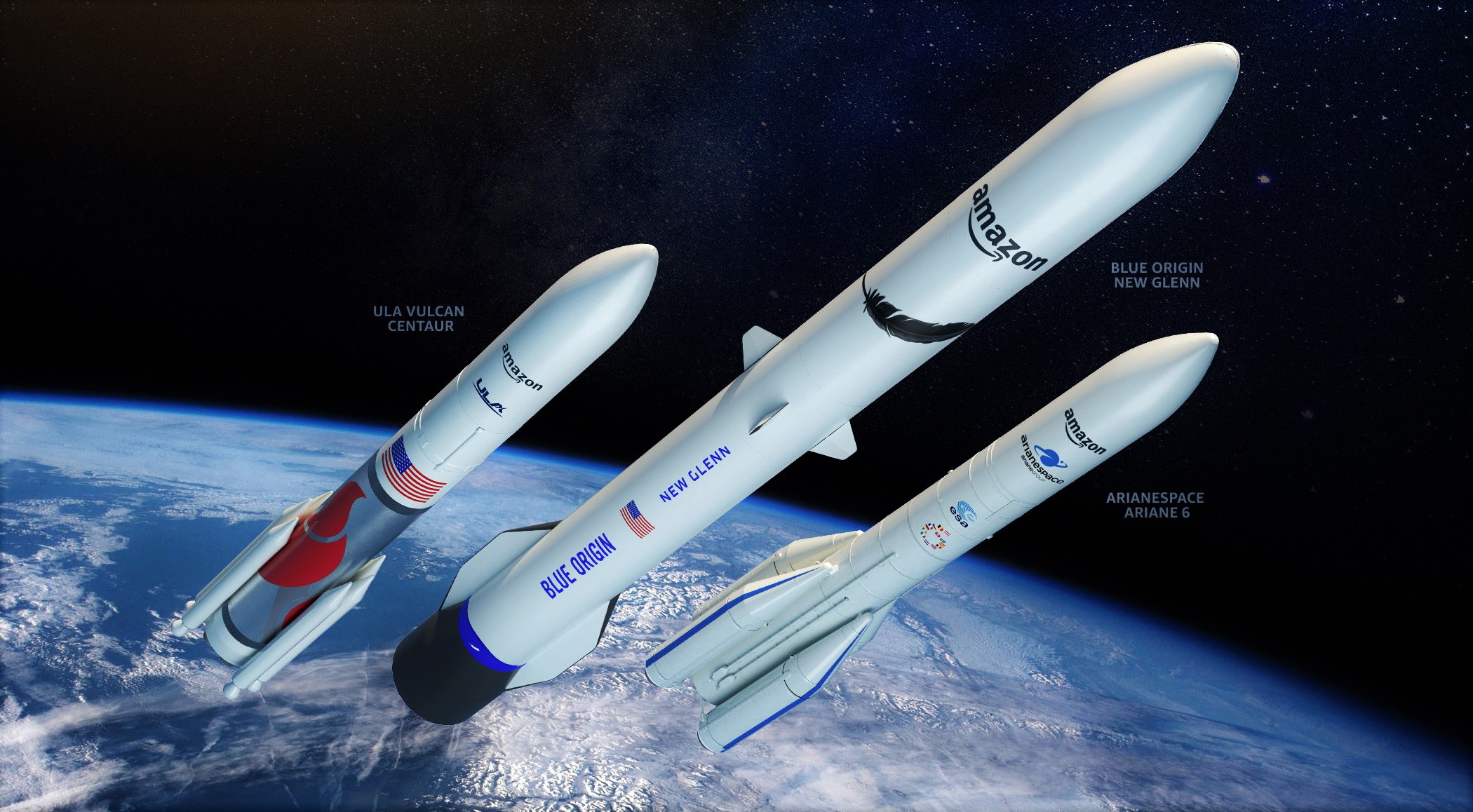
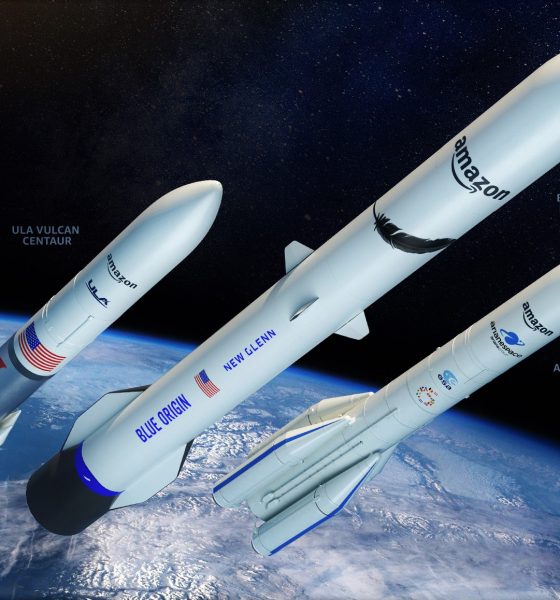
News
SpaceX still an option for future Amazon internet satellite launches, says Senior VP
An Amazon executive says that the company could still call on SpaceX to launch some of its Project Kuiper internet satellites after two of the three unproven rockets it purchased announced launch delays days apart.
Amazon began work on Project Kuiper in 2018. When SpaceX CEO Elon Musk fired several senior employees overseeing the company’s Starlink satellite internet program for being overly cautious, at least two of those employees immediately landed in senior positions at Project Kuiper. Four years later and more than two years after Amazon received an FCC license to deploy its 3,236-satellite Project Kuiper constellation, which aims to compete directly with SpaceX’s Starlink, the company’s first prototype satellite launch has changed rockets and slipped from late 2022 to early 2023.
Of the 77 firm launch contracts Amazon has signed since April 2021, only nine are for a rocket – United Launch Alliance’s (ULA) Atlas V – that has already successfully flown. The remaining 68 (and another 15 exercisable options) are spread among ULA’s Vulcan Centaur, Arianespace’s Ariane 6, and Blue Origin’s New Glenn, all of which are months away from their first launch attempts.
On October 10th, ULA CEO Tory Bruno told reporters that Vulcan Centaur’s launch debut had slipped from its latest late-2022 target to no earlier than (NET) “early 2023.” Garnering 38 of 77 firm contracts, Vulcan is the single most important rocket for Amazon’s Project Kuiper plans and is likely expected to launch close to half of all Kuiper satellites.
Nine days later, Ariane Group and the European Space Agency (ESA) announced that Ariane 6’s launch debut had also slipped from a late-2022 target. Unlike Vulcan’s gentle early-2023 slip, Ariane 6’s debut was pushed to late 2023 at the earliest, and ESA and Ariane officials frankly admitted that that could easily become 2024. Excluding options, Ariane 6 won 18 Project Kuiper launch contracts and is the constellation’s second most important rocket.
Because Amazon applied for its Project Kuiper license so early, a six-year countdown started when the FCC approved its license in July 2020. If Amazon fails to launch half of its 3,236 satellites within six years of that receipt, the FCC could revoke Kuiper’s constellation license. While it’s unlikely that the FCC would actually revoke the license of a constellation that’s close to achieving its deployment milestones, the deadline still emphasizes just how far Amazon and its suppliers are falling behind.
Vulcan, Ariane 6, and Project Kuiper prototype launch delays have only worsened an already challenging situation. In addition to the rocket’s long-awaited debut, ULA has major obligations to NASA and the US military, who expect Vulcan to complete up to four more launches in 2023. Unless ULA pulls off a minor miracle, it’s unlikely that Vulcan will be able to launch five times in its first year of service. Respectively, ULA’s Atlas V and Delta IV rockets took 2.5 and 3.5 years to reach that milestone. If ULA’s past record serves as a reasonable guide for its future, it’s possible that Vulcan Centaur won’t have the spare capacity to begin Project Kuiper launches until 2025.
The same is arguably true for Ariane 6, which has an even busier manifest – all of which may be delayed to 2024. Of Arianespace’s two most recent rockets, Ariane 4 took 14 months and Ariane 5 took 53 months to complete their first five fully successful launches. Ariane 6 borrows heavily from Ariane 5’s design. Unless Arianespace gets off to a record-breaking start or prioritizes Amazon over ESA and other European operators, an almost unthinkable scenario, it’s difficult to imagine that Ariane 6 will have the spare capacity to begin Project Kuiper launches before 2025 or 2026.
Blue Origin’s New Glenn rocket, which is years behind schedule and unlikely to debut before late 2023 or 2024, might ironically be Amazon’s best bet for the first dedicated Project Kuiper launch, but only if its debut is near-flawless and doesn’t slip any further. Given that New Glenn will be Blue Origin’s first orbital rocket of any kind, more delays and issues (if not an outright failure) on the first launch are likely. New Glenn is thus also unlikely to be ready to launch large batches of Project Kuiper satellites until 2024 or 2025. Given the record of its suborbital New Shepard rocket, the odds are also against Blue Origin quickly ramping up the cadence of a far more complex orbital launch vehicle.
Only Atlas V appears to have any significant chance of beginning large-scale Project Kuiper launches before 2025. But ULA is shutting down Atlas V production to transition to Vulcan, so it’s impossible for Amazon to order more than nine of the rockets, as ULA.
Unfortunately for Amazon, in addition to the many rocket-side issues facing Project Kuiper, its satellite prototype delays will make it even harder for the company to begin large-scale launches sooner than later. SpaceX, now the proud owner of a majority of all working satellites in orbit, took around 21 months to go from launching its first two prototypes to its first batch of 60 operational Starlink satellites. The satellite design it settled on was almost nothing like the first two prototypes.
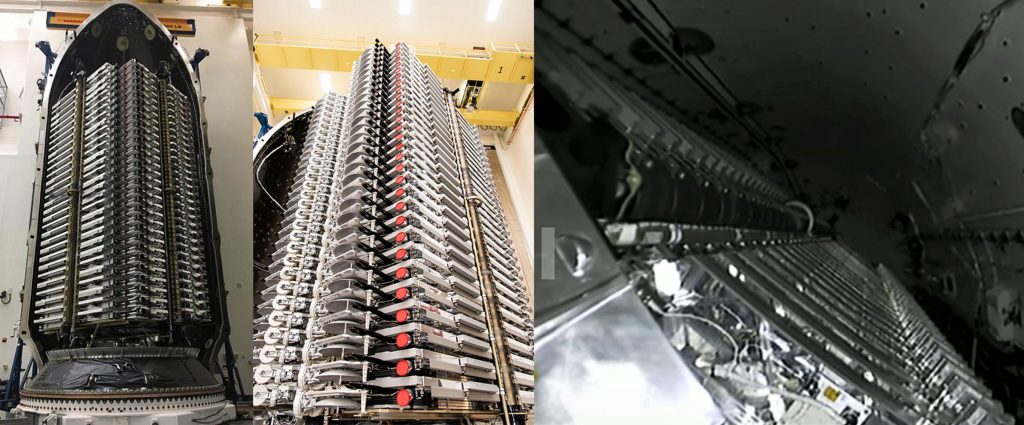
If Amazon’s first prototypes launch on Vulcan’s early-2023 debut, perform excellently, meet or exceed expectations after just a few months of testing, and are close to the final satellite design, Project Kuiper may still have a shot at manufacturing enough satellites to fill one or more launches in 2024. But if its first satellites run into major issues, Amazon’s decision to “[bring] up manufacturing of…production satellites [in parallel with prototype development]” could set it back months if it’s forced to redesign its satellites, find new suppliers, or significantly change the factory it’s already building.
Combined, Project Kuiper finds itself in an unenviable position. It’s thus unsurprising that as of October 2022, an Amazon executive appears to have changed their tune about using SpaceX rockets. Over the last ~13 months, SpaceX has become the single most productive launch provider in the world, besting the entire nation of China. On a quarterly basis, SpaceX now launches more useful mass to orbit than the rest of the world combined. It’s also the only launch provider on Earth that can create spare capacity for last-minute customers by shuffling its own internal launch demands.
According to Dave Limp, senior vice president of devices and services at Amazon, Project Kuiper is willing to consider taking advantage of some of SpaceX’s unprecedented capabilities after it shunned the company entirely in earlier contracts and statements. Speaking in a Washington Post Live interview, Limp says that Amazon is “open to contracting with anyone” and understands “that heavy launch capacity is [and will likely remain] pretty constrained” for years to come.
Unfortunately, Limp began by falsely asserting that Falcon 9 was too small to have warranted earlier launch contracts, stating that it’s “probably at the low end of…the capacity that we need.” In an expendable configuration, Falcon 9 can launch more than 22 tons (~48,500 lb) to low Earth orbit (LEO), while Ariane 6 is quoted at [PDF] 21.7 tons (~47,800 lb). While it hasn’t flown, SpaceX also offers an extended payload fairing that should more or less match Vulcan and Ariane 6’s largest fairings.
But Limp expressed interest in SpaceX’s Falcon Heavy rocket, which could likely match or come close to the payload volume of Ariane 6 and Vulcan and far exceed either rocket’s performance to LEO. In a configuration that would allow SpaceX to recover all three of Falcon Heavy’s boosters, almost guaranteeing that it would cost less than Vulcan or Ariane 6, the rocket would likely be able to launch around 40-50 tons (90,000-110,000 lb) to LEO. The Amazon executive even brought up SpaceX’s next-generation Starship rocket as a more desirable option for future Project Kuiper launches. Starship is designed to launch anywhere from 100 to 150 tons to LEO, should cost even less than Falcon 9 or Falcon Heavy, and will eventually feature a payload bay that dwarfs even New Glenn’s massive fairing.
Nonetheless, despite the promise of SpaceX, Amazon appears to be in no rush to hedge its bets on Vulcan, Ariane 6, and New Glenn. Only time will tell if its multi-billion-dollar gamble pays off.

Elon Musk
Elon Musk and Tesla try to save legacy automakers from Déjà vu
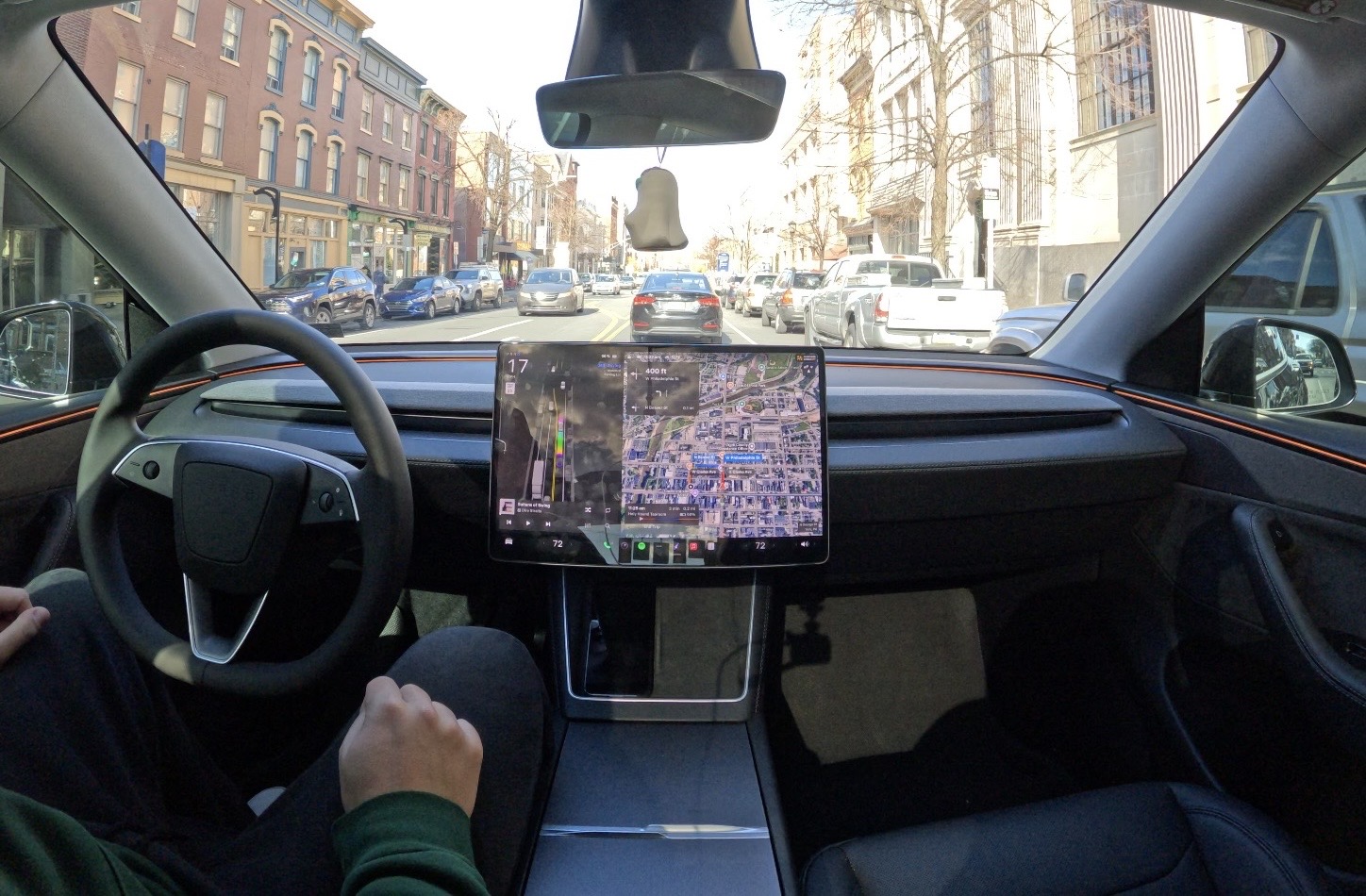
Elon Musk said in late November that he’s “tried to warn” legacy automakers and “even offered to license Tesla Full Self-Driving, but they don’t want it,” expressing frustration with companies that refuse to adopt the company’s suite, which will eventually be autonomous.
Tesla has long established itself as the leader in self-driving technology, especially in the United States. Although there are formidable competitors, Tesla’s FSD suite is the most robust and is not limited to certain areas or roadways. It operates anywhere and everywhere.
The company’s current position as the leader in self-driving tech is being ignored by legacy automakers, a parallel to what Tesla’s position was with EV development over a decade ago, which was also ignored by competitors.
The reluctance mirrors how legacy automakers initially dismissed EVs, only to scramble in catch-up mode years later–a pattern that highlights their historical underestimation of disruptive innovations from Tesla.
Elon Musk’s Self-Driving Licensing Attempts
Musk and Tesla have tried to push Full Self-Driving to other car companies, with no true suitors, despite ongoing conversations for years. Tesla’s FSD is aiming to become more robust through comprehensive data collection and a larger fleet, something the company has tried to establish through a subscription program, free trials, and other strategies.
Tesla CEO Elon Musk sends rivals dire warning about Full Self-Driving
However, competing companies have not wanted to license FSD for a handful of speculative reasons: competitive pride, regulatory concerns, high costs, or preference for in-house development.
Déjà vu All Over Again
Tesla tried to portray the importance of EVs long ago, as in the 2010s, executives from companies like Ford and GM downplayed the importance of sustainable powertrains as niche or unprofitable.
Musk once said in a 2014 interview that rivals woke up to electric powertrains when the Model S started to disrupt things and gained some market share. Things got really serious upon the launch of the Model 3 in 2017, as a mass-market vehicle was what Tesla was missing from its lineup.
This caused legacy companies to truly wake up; they were losing market share to Tesla’s new and exciting tech that offered less maintenance, a fresh take on passenger auto, and other advantages. They were late to the party, and although they have all launched vehicles of their own, they still lag in two major areas: sales and infrastructure, leaning on Tesla for the latter.
I’ve tried to warn them and even offered to license Tesla FSD, but they don’t want it! Crazy …
When legacy auto does occasionally reach out, they tepidly discuss implementing FSD for a tiny program in 5 years with unworkable requirements for Tesla, so pointless. 🤷♂️
🦕 🦕
— Elon Musk (@elonmusk) November 24, 2025
Musk’s past warnings have been plentiful. In 2017, he responded to critics who stated Tesla was chasing subsidies. He responded, “Few people know that we started Tesla when GM forcibly recalled all electric cars from customers in 2003 and then crushed them in a junkyard,” adding that “they would be doing nothing” on EVs without Tesla’s efforts.
Companies laughed off Tesla’s prowess with EVs, only to realize they had made a grave mistake later on.
It looks to be happening once again.
A Pattern of Underestimation
Both EVs and self-driving tech represent major paradigm shifts that legacy players view as threats to their established business models; it’s hard to change. However, these early push-aways from new tech only result in reactive strategies later on, usually resulting in what pains they are facing now.
Ford is scaling back its EV efforts, and GM’s projects are hurting. Although they both have in-house self-driving projects, they are falling well behind the progress of Tesla and even other competitors.
It is getting to a point where short-term risk will become a long-term setback, and they may have to rely on a company to pull them out of a tough situation later on, just as it did with Tesla and EV charging infrastructure.
Tesla has continued to innovate, while legacy automakers have lagged behind, and it has cost them dearly.
Implications and Future Outlook
Moving forward, Tesla’s progress will continue to accelerate, while a dismissive attitude by other companies will continue to penalize them, especially as time goes on. Falling further behind in self-driving could eventually lead to market share erosion, as autonomy could be a crucial part of vehicle marketing within the next few years.
Eventually, companies could be forced into joint partnerships as economic pressures mount. Some companies did this with EVs, but it has not resulted in very much.
Self-driving efforts are not only a strength for companies themselves, but they also contribute to other things, like affordability and safety.
Tesla has exhibited data that specifically shows its self-driving tech is safer than human drivers, most recently by a considerable margin. This would help with eliminating accidents and making roads safer.
Tesla’s new Safety Report shows Autopilot is nine times safer than humans
Additionally, competition in the market is a good thing, as it drives costs down and helps innovation continue on an upward trend.
Conclusion
The parallels are unmistakable: a decade ago, legacy automakers laughed off electric vehicles as toys for tree-huggers, crushed their own EV programs, and bet everything on the internal-combustion status quo–only to watch Tesla redefine the industry while they scrambled for billions in catch-up capital.
Today, the same companies are turning down repeated offers to license Tesla’s Full Self-Driving technology, insisting they can build better autonomy in-house, even as their own programs stumble through recalls, layoffs, and missed milestones. History is not merely rhyming; it is repeating almost note-for-note.
Elon Musk has spent twenty years warning that the auto industry’s bureaucratic inertia and short-term thinking will leave it stranded on the wrong side of technological revolutions. The question is no longer whether Tesla is ahead–it is whether the giants of Detroit, Stuttgart, and Toyota will finally listen before the next wave leaves them watching another leader pull away in the rear-view mirror.
This time, the stakes are not just market share; they are the very definition of what a car will be in the decades ahead.
News
Waymo driverless taxi drives directly into active LAPD standoff
No injuries occurred, and the passengers inside the vehicle were safely transported to their destination, as per a Waymo representative.

A video posted on social media has shown an occupied Waymo driverless taxi driving directly into the middle of an active LAPD standoff in downtown Los Angeles.
As could be seen in the short video, which was initially posted on Instagram by user Alex Choi, a Waymo driverless taxi drove directly into the middle of an active LAPD standoff in downtown Los Angeles.
The driverless taxi made an unprotected left turn despite what appeared to be a red light, briefly entering a police perimeter. At the time, officers seemed to be giving commands to a prone suspect on the ground, who looked quite surprised at the sudden presence of the driverless vehicle.
People on the sidewalk, including the person who was filming the video, could be heard chuckling at the Waymo’s strange behavior.
The Waymo reportedly cleared the area within seconds. No injuries occurred, and the passengers inside the vehicle were safely transported to their destination, as per a Waymo representative. Still, the video spread across social media, with numerous netizens poking fun at the gaffe.
Others also pointed out that such a gaffe would have resulted in widespread controversy had the vehicle involved been a Tesla on FSD. Tesla is constantly under scrutiny, with TSLA shorts and similar groups actively trying to put down the company’s FSD program.
A Tesla on FSD or Robotaxi accidentally driving into an active police standoff would likely cause lawsuits, nonstop media coverage, and calls for a worldwide ban, at the least.
This was one of the reasons why even minor traffic infractions committed by the company’s Robotaxis during their initial rollout in Austin received nationwide media attention. This particular Waymo incident, however, will likely not receive as much coverage.
News
Tesla Model Y demand in China is through the roof, new delivery dates show
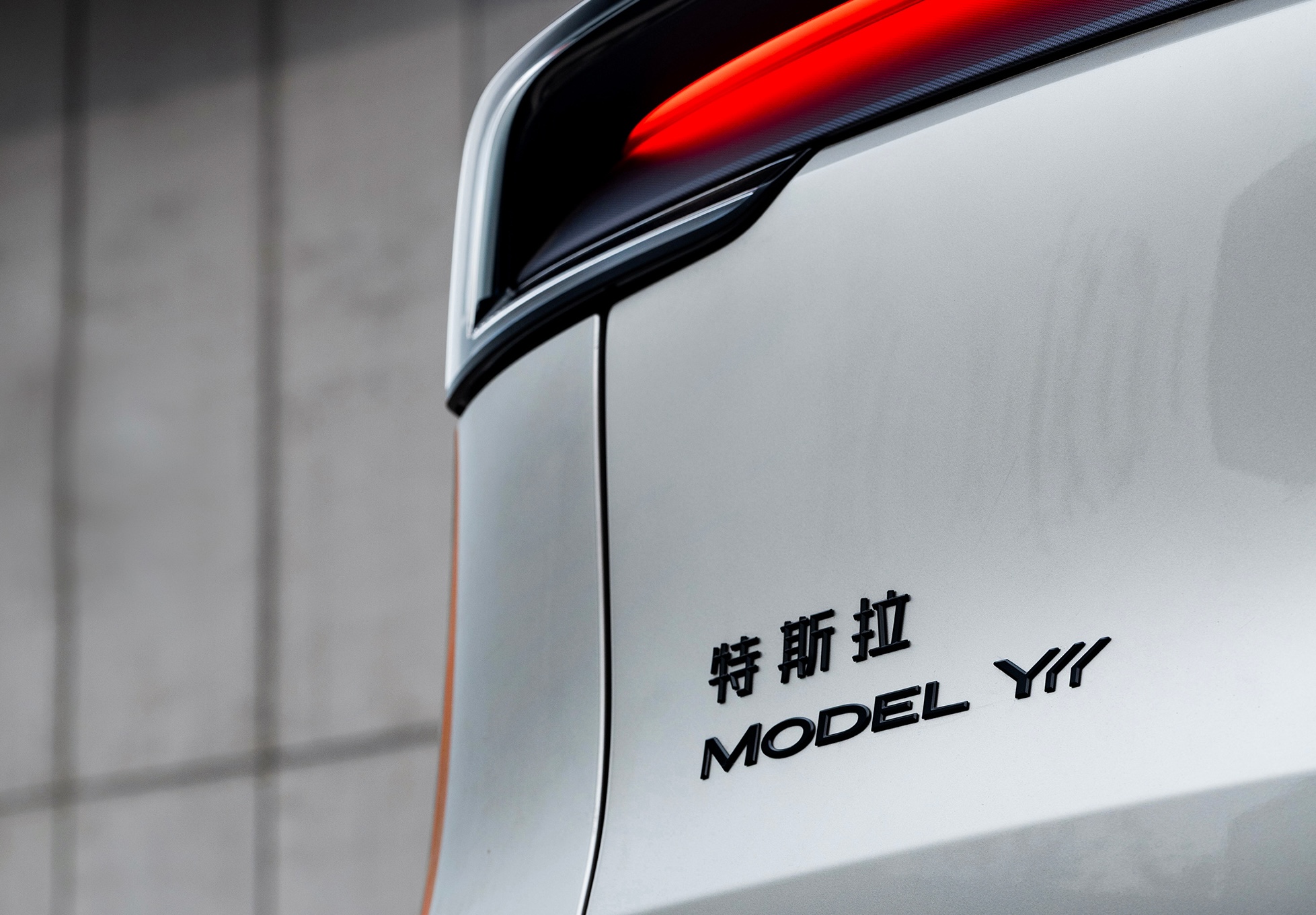
Tesla Model Y demand in China is through the roof, and new delivery dates show the company has already sold out its allocation of the all-electric crossover for 2025.
The Model Y has been the most popular vehicle in the world in both of the last two years, outpacing incredibly popular vehicles like the Toyota RAV 4. In China, the EV market is substantially more saturated, with more competitors than in any other market.
However, Tesla has been kind to the Chinese market, as it has launched trim levels for the Model Y in the country that are not available anywhere else. Demand has been strong for the Model Y in China; it ranks in the top 5 of all EVs in the country, trailing the BYD Seagull, Wuling Hongguang Mini EV, and the Geely Galaxy Xingyuan.
The other three models ahead of the Model Y are priced substantially lower.
Tesla is still dealing with strong demand for the Model Y, and the company is now pushing delivery dates to early 2026, meaning the vehicle is sold out for the year:
NEWS: New orders for all four Tesla Model Y trims in China are now officially sold out for 2025, as the factory’s remaining production capacity for the year has been fully allocated.
Estimated delivery dates for new orders now show January-February 2026. pic.twitter.com/Dfnu7yY58N
— Sawyer Merritt (@SawyerMerritt) December 1, 2025
Tesla experienced a 9.9 percent year-over-year rise in its China-made EV sales for November, meaning there is some serious potential for the automaker moving into next year despite increased competition.
There have been a lot of questions surrounding how Tesla would perform globally with more competition, but it seems to have a good grasp of various markets because of its vehicles, its charging infrastructure, and its Full Self-Driving (FSD) suite, which has been expanding to more countries as of late.
Tesla Model Y is still China’s best-selling premium EV through October
Tesla holds a dominating lead in the United States with EV registrations, and performs incredibly well in several European countries.
With demand in China looking strong, it will be interesting to see how the company ends the year in terms of global deliveries.








